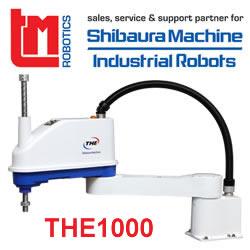How Robot Sensors Are Powering a USD 5 Billion Revolution by 2032
.jpg)
The rapid evolution of robotics has been one of the most transformative technological trends in recent years. From manufacturing floors to healthcare facilities, robots are becoming increasingly sophisticated, capable of performing tasks that demand precision, speed, and adaptability. A critical component enabling these advancements is the integration of cutting-edge sensors, which allow robots to perceive, interpret, and interact with their environments. As industries worldwide recognize the importance of robotic automation, the global robot sensor market is poised for unprecedented growth, with projections estimating its valuation to exceed $5 billion by 2032.
Driving Forces Behind the Growth
1. Industrial Automation and Smart Manufacturing
The ongoing shift towards Industry 4.0 has fueled the adoption of robotics in manufacturing and production processes. Sensors play an essential role in industrial robots by enhancing their ability to detect objects, avoid collisions, and execute tasks with precision. With manufacturers emphasizing efficiency, accuracy, and scalability, the demand for advanced robot sensors is surging. Key industries such as automotive, electronics, and aerospace are leading this adoption, driving substantial revenue growth in the sensor market.
2. Expanding Applications Across Sectors
Beyond manufacturing, robot sensors are finding applications in diverse sectors such as healthcare, agriculture, logistics, and defense. For instance:
- Healthcare: Robotic-assisted surgeries and patient monitoring systems heavily rely on sensors for real-time feedback and decision-making.
- Agriculture: Robots equipped with environmental and vision sensors are revolutionizing precision farming, enabling tasks like crop monitoring, soil analysis, and pest control.
- Logistics: Autonomous delivery robots and warehouse automation systems use sensors for navigation, inventory management, and obstacle avoidance.
This cross-sector adoption is significantly contributing to the overall market expansion.
3. Advancements in Sensor Technology
Continuous innovation in sensor technology is another pivotal factor propelling market growth. New-age sensors, such as LiDAR (Light Detection and Ranging), ultrasonic, and tactile sensors, are becoming smaller, more efficient, and cost-effective. These advancements enable robots to perform complex tasks with greater accuracy, making them indispensable for applications ranging from autonomous vehicles to humanoid robots.
4. Rising Demand for Collaborative Robots (Cobots)
Collaborative robots, or cobots, are designed to work alongside humans in shared workspaces. Cobots rely extensively on sensors for safety and efficiency, using technologies like force sensors to detect human presence and adjust their operations accordingly. As cobots gain traction in small- and medium-sized enterprises (SMEs), the demand for sophisticated sensors is expected to rise correspondingly.
Key Market Trends
1. Integration of Artificial Intelligence (AI)
The fusion of AI with robotics is reshaping the functionality of robot sensors. AI algorithms enable sensors to process large volumes of data, recognize patterns, and make autonomous decisions. This integration enhances robots' ability to adapt to dynamic environments and execute complex tasks without human intervention. AI-powered sensors are especially critical in autonomous vehicles, drones, and smart robotics applications.
2. Focus on Sustainability
As sustainability becomes a global priority, industries are turning to robotics to minimize resource wastage and optimize energy consumption. Sensors play a crucial role in ensuring that robots operate efficiently and sustainably. For example, energy-efficient sensors in industrial robots help reduce power consumption, aligning with companies' environmental goals.
3. Growth in Edge Computing
The adoption of edge computing is transforming the way robot sensors operate. By processing data locally rather than relying on cloud-based systems, edge computing reduces latency and enhances real-time decision-making capabilities. This trend is particularly relevant in applications requiring immediate responses, such as autonomous vehicles and medical robots.
4. Increasing Investment in R&D
Leading companies and research institutions are investing heavily in developing next-generation sensors for robotics. Innovations such as bio-inspired sensors, which mimic human senses like touch and vision, are expected to redefine the capabilities of robots. These advancements are likely to open new avenues for market growth over the coming decade.
Challenges and Opportunities
While the robot sensor market presents immense opportunities, it is not without challenges. High initial costs and technical complexities associated with sensor integration may hinder adoption, particularly among smaller businesses. Additionally, concerns around data security and privacy in robotics applications could pose barriers.
However, these challenges also create opportunities for innovation. Companies that can offer affordable, user-friendly, and secure sensor solutions stand to gain a competitive edge. Moreover, emerging markets in Asia-Pacific, Latin America, and Africa present untapped growth potential, with increasing investments in automation and infrastructure development.
Regional Insights
1. North America
North America remains a dominant player in the robot sensor market, driven by technological advancements and high adoption rates across industries. The region’s strong presence in sectors like automotive, healthcare, and defense contributes to its leadership position.
2. Europe
Europe is witnessing robust growth, supported by initiatives promoting Industry 4.0 and smart manufacturing. Countries like Germany, France, and the UK are at the forefront of adopting robotics and automation technologies.
3. Asia-Pacific
The Asia-Pacific region is anticipated to register the highest growth rate during the forecast period. Factors such as rapid industrialization, growing investments in automation, and the presence of major electronics and automotive manufacturers are driving the market in this region. China, Japan, and South Korea are leading contributors to the regional growth.
The Road Ahead
The robot sensor market is on the cusp of a major transformation. With technological advancements, increasing automation, and expanding applications, the market is set to achieve remarkable milestones over the next decade. Industry players must focus on innovation, collaboration, and addressing market challenges to harness the full potential of this burgeoning sector.
As robotics continues to redefine industries and improve human lives, the role of sensors as enablers of intelligence and precision cannot be overstated. By 2032, the projected $5 billion valuation of the robot sensor market will not only signify economic success but also mark a pivotal chapter in the evolution of robotics technology.
Source: https://www.gminsights.com/industry-analysis/robot-sensor-market
Comments (0)
This post does not have any comments. Be the first to leave a comment below.
Featured Product

